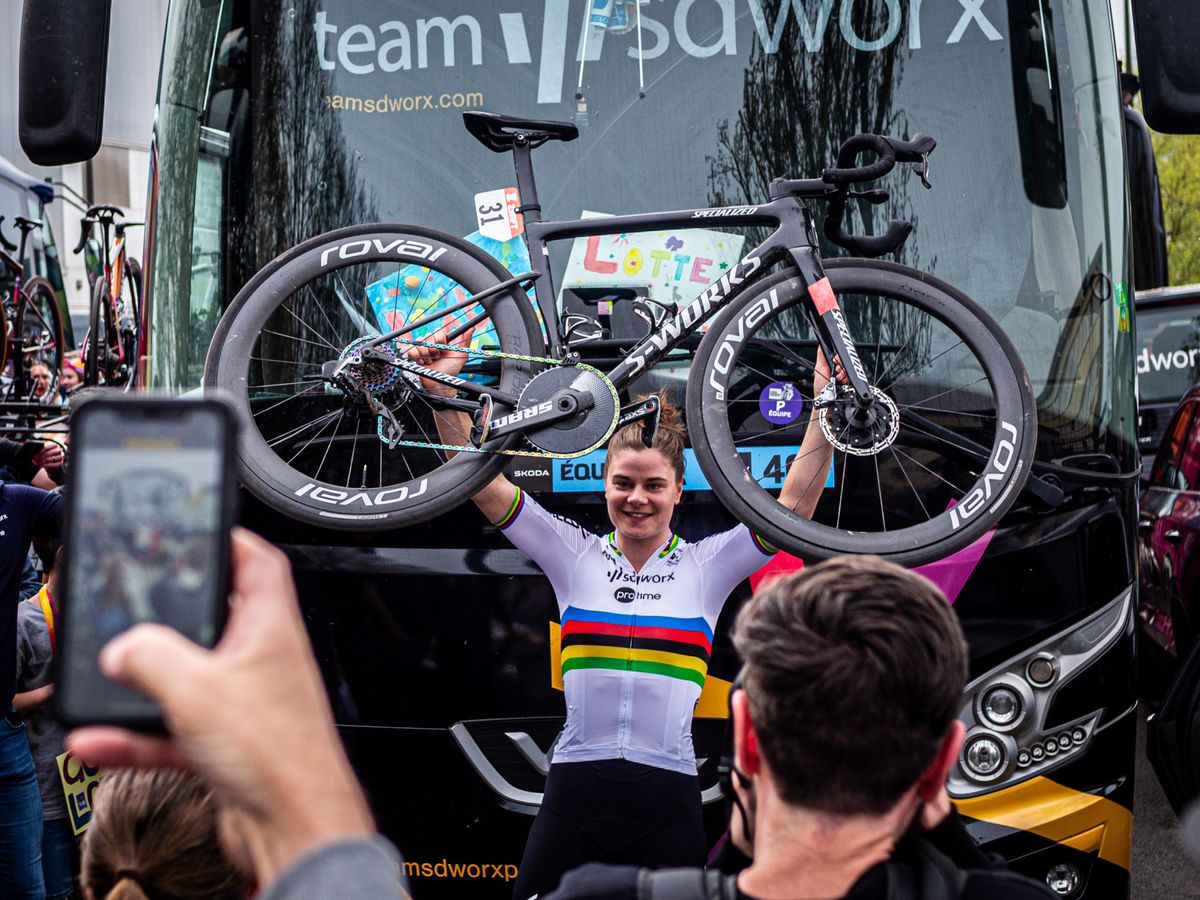Alas, the mud has settled on one other epic Paris-Roubaix weekend. The ‘Holy Week’ is over, and though the rain steered clear, Roubaix was nonetheless handled to a rainbow show as each Lotte Kopecky and Mathieu van der Poel took victory of their World Champions’ jerseys. Cue the ‘double rainbow’ viral video.
As ever, Cyclingnews had a group of devoted reporters on the bottom following the race and browsing the paddock to hunt out any new tech. We have already introduced you the information that Israel Premier Tech would race aboard gravel bikes. We confirmed that the Specialised Roubaix would not get an look in its namesake race. We unearthed a mega-aero-looking new bike from the Uno-X camp, and we compiled two big tech galleries, protecting tech from the ladies’s race and tech from the boys’s race.
However because the hangover from the weekend’s chaos – and all of the Westmalle Tripel – wears off, some overarching tech tendencies start to rise to the floor. With each version of Paris-Roubaix, the world of motorbike tech strikes alongside at tempo. For instance, tyres get wider, chainrings get larger, and if the previous two editions are something to go by, the common speeds get sooner.
However there are lots of extra tendencies and conclusions to attract, 9 in complete, in order that’s precisely what we have completed.
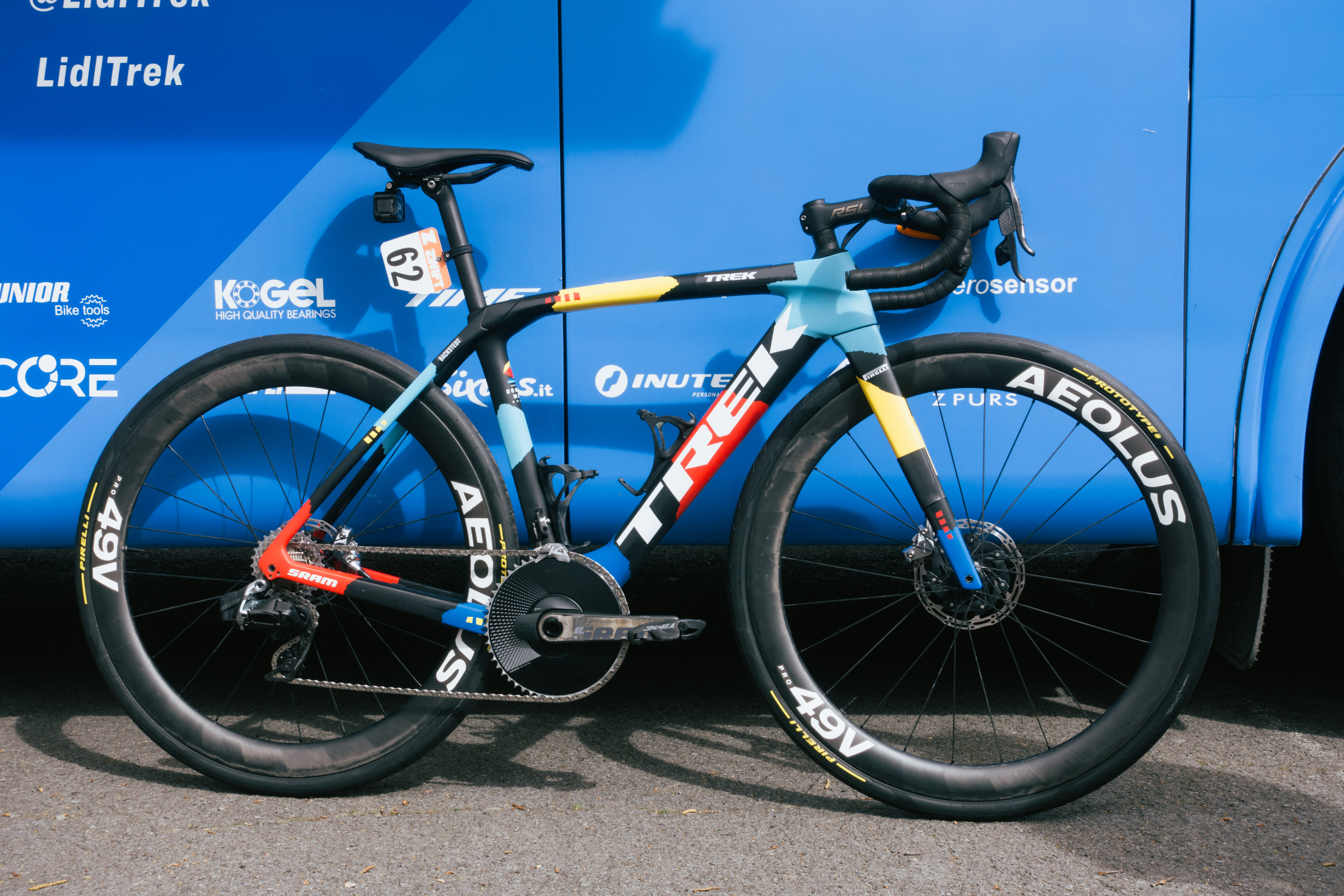
Ladies’s Paris-Roubaix tech is extra fascinating than males’s
Within the days earlier than the occasion, I spoke with the Specialised S-Racing group who talked me by the gear choice course of that groups endure. It led to a narrative about Specialised riders ditching the Roubaix, however my greatest takeaway was how the group and the model labored collectively to decide on the gear that will seemingly be quickest for the situations they’d face and the technique that they had. For instance, they mentioned that in 2023, SD-Worx used the Tarmac SL7 as a result of that they had fewer cobbles to take care of, whereas the boys went with the Roubaix, other than Nils Pollitt who wished to get within the early breakaway.
This yr, the boys shunned the Roubaix and as a substitute used the Tarmac SL8, preferring to simply accept the detriment on the cobbles as a result of the true race was on the street; the race for place within the lead-up to every sector.
What that meant is that just about ubiquitously, the boys used typical aero bikes with little in the way in which of cobble-smoothing hacks apart from wider tyres, additional bar tape, and infrequently a change of handlebars.
The newest race content material, interviews, options, critiques and skilled shopping for guides, direct to your inbox!
Apparently, regardless of SD-Worx taking an identical method to the boys, the overall method to gear within the girls’s peloton was considerably extra combined. The rostrum itself was an ideal instance of this, with the winner Lotte Kopecky on an all-rounder, 2nd place Elisa Balsamo on an endurance bike, and third place Pfeiffer Georgi on a no-holds-barred aero bike. Proof if ever we wanted it that it is the rider, not the bike, that wins the race.
However the good thing about such a mixture is that it is rather more fascinating to nerd out at the beginning.
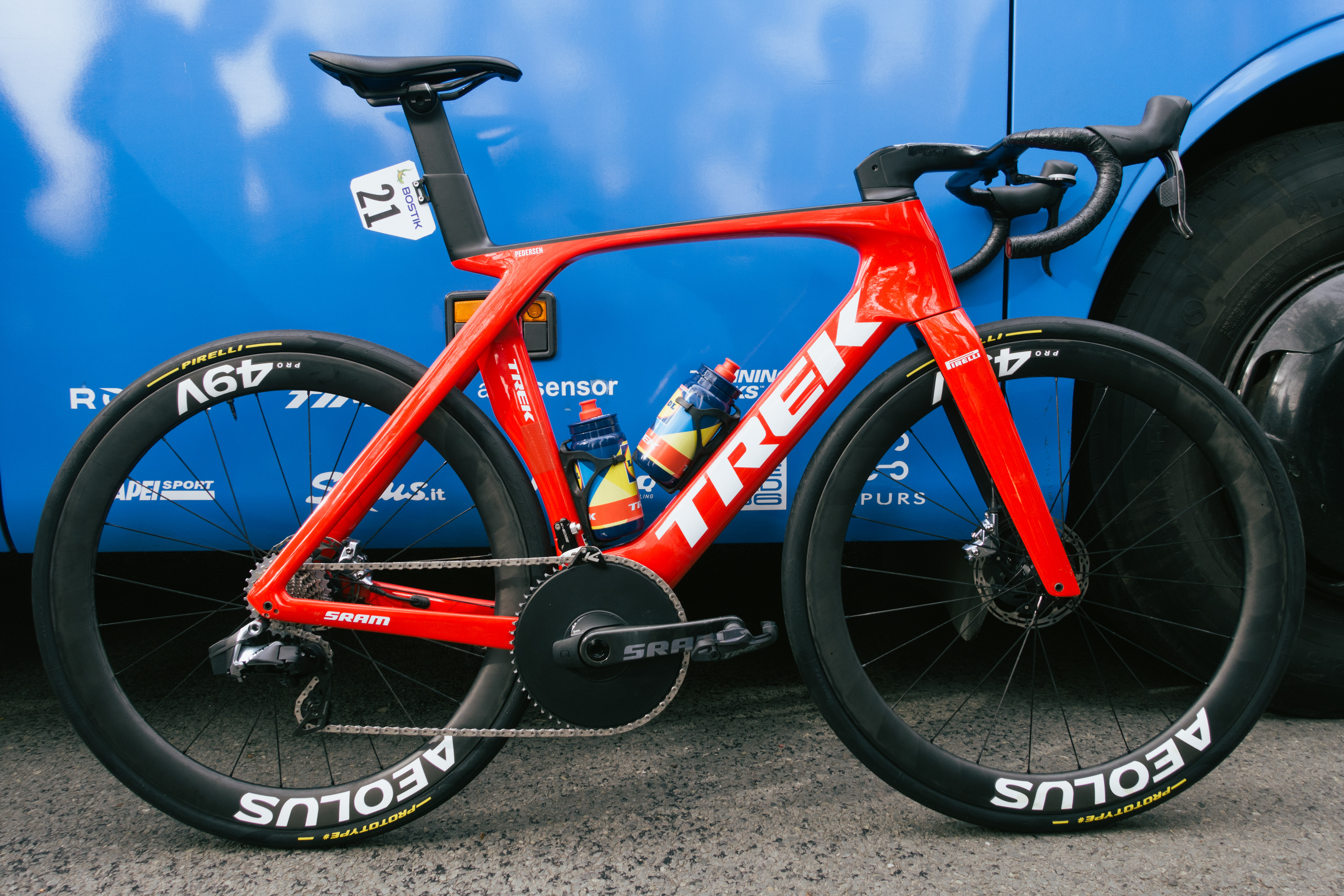
Aero is king, the ‘particular Roubaix bike’ is lifeless
Not a lot the aero bike, however aero generally. In years passed by, tech hacks at Paris-Roubaix have centred on making the bike sooner over the cobbles. This has resulted in riders utilizing bikes with wild cobble-smoothing hacks. Does anybody keep in mind Rockshox forks or the full-suspension Bianchi?
Now although, aero bikes have been extra prevalent than endurance bikes, and there have been as many hacks focussed on aero as there have been on the rest. Cue Alexander Kristoff, whose new prototype Dare bike leaves little doubt as to its aero intentions. Additionally cue most SRAM-sponsored riders who all swapped to 1X with an aero chainring. And let’s not neglect Josh Tarling, whose Pinarello Dogma F was kitted out with a frankly bonkers 62T 1x aero chainring.
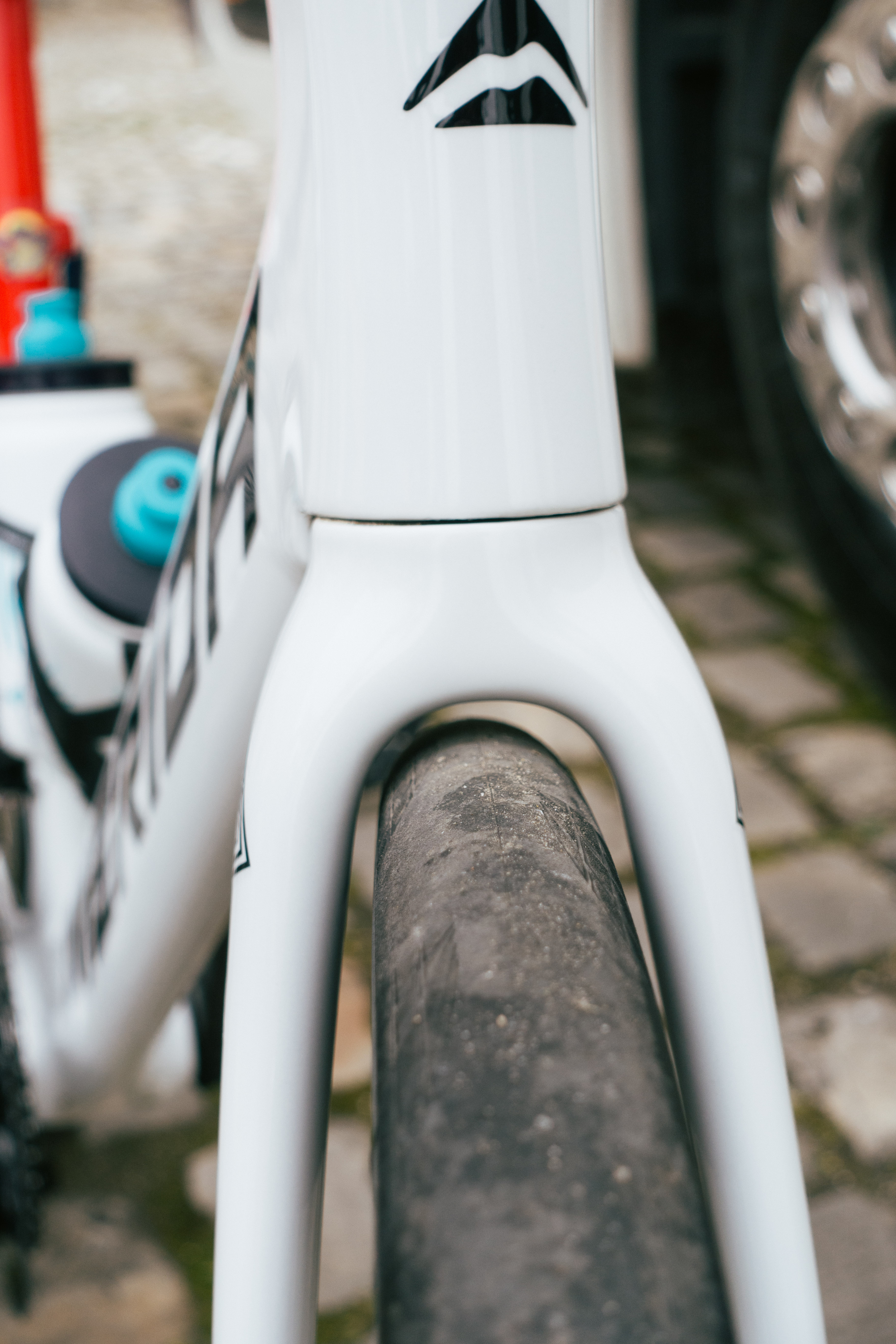
Cyclocross tyres are actually narrower than street
My esteemed colleague Will introduced alongside his trusty vernier callipers to measure the precise width of riders’ tyres, and the massive takeaway was that if this have been a cyclocross race, most riders would have been kicked out earlier than the race started.
Whereas the commonest selection of tyre measurement was 32c, with the vast rims obtainable immediately, most measured wider. Lidl-Trek, for instance, have been operating Prototype Pirelli tyres in a 32c width, wrapped round Bontrager Aeolus 49 gravel wheels. The precise width ballooned to 34.5mm. Beating that, nonetheless, is Fred Wright and his Bahrain Victorious group, who used the Continental GP5000 AS TR tyre within the 35mm possibility.
Cyclocross, an off-road self-discipline, limits tyres to 33mm vast, and has completed so since July 1, 2010, when the restriction shrunk from 35mm. Will the UCI resolve to calm down that rule as soon as once more, or will they select to retain the 33c rule with a purpose to guarantee differentiation between cyclocross and gravel, and the tech that comes with it? Solely time will inform.
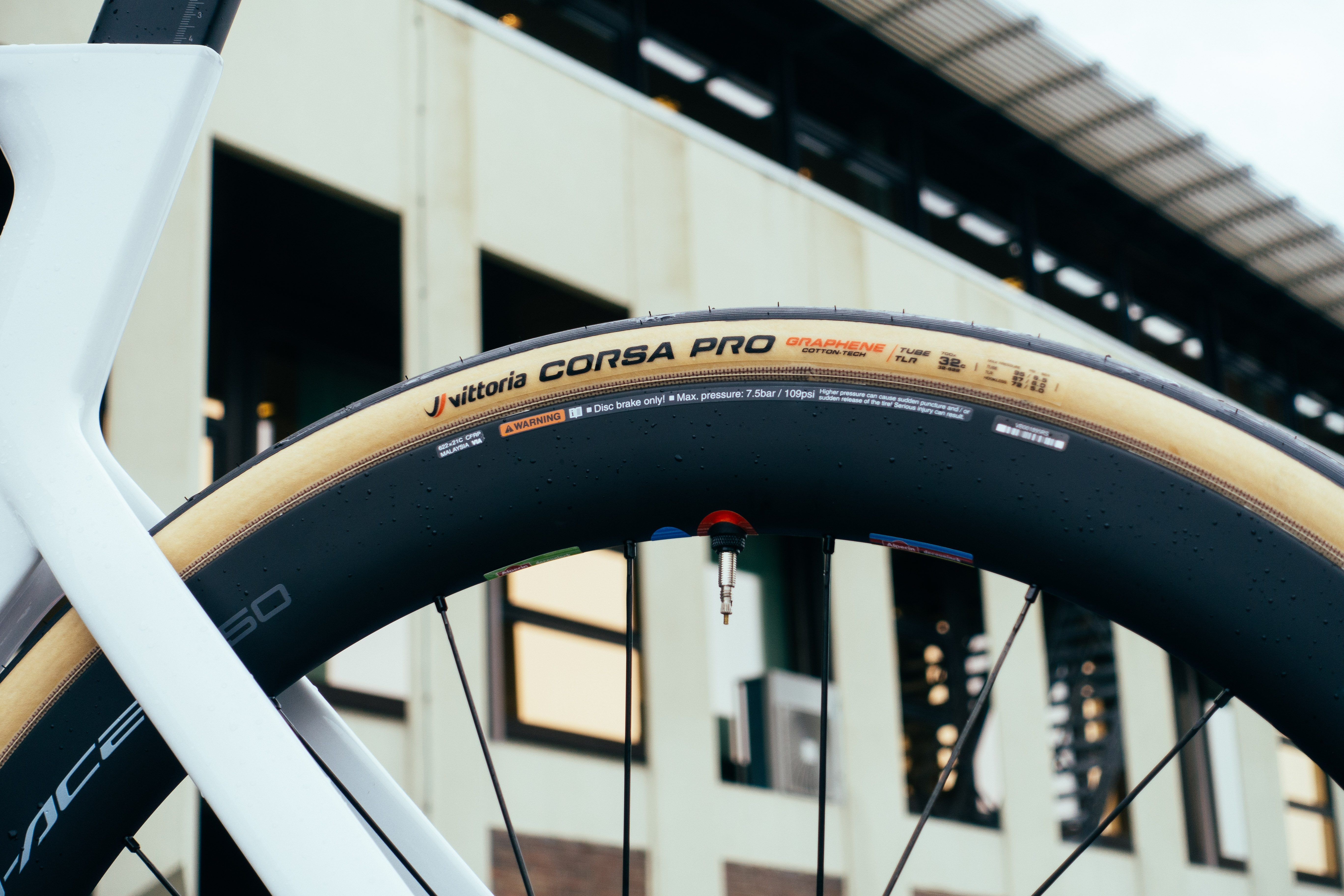
32c tyres are normal, however we predict wider is coming
The precise width of a tyre and the quantity on the sidewall can differ fairly a bit because the rim width will have an effect on the ultimate form as soon as inflated. However going by the producer’s measurement designation, 32c was the commonest selection for each the women and men at Paris-Roubaix.
Right here at Cyclingnews, we predict that this selection will proceed to get wider every year.
The optimum tyre width is, naturally, a steadiness of some parts working collectively. Tyre clearance is crucial issue, as a result of if a tyre rubs on the body, it is instantly slower by friction and may result in catastrophic injury.
Holistic design is the subsequent large factor to contemplate: if a rim is designed to work finest with 25c tyres, a 35c possibility will blow up with a much less aerodynamic ‘lightbulb’ profile and certain deal with much less confidently than if it have been paired with a rim designed for wider tyres.
Presently, most new street rims are being designed to work with tyres across the 28 to 30mm width, and tyre clearances in street bike frames permit round 32mm. If clearances in race bike frames (and entrance derailleurs, as we’ll get to beneath) have been wider, and rims have been designed round 35mm tyres or extra, then we would in all probability begin to see manufacturers like Pirelli, Continental, Vittoria and Specialised making wider street tyres too.
In fact, we already are seeing this to some extent in gravel. Gravel wheels are being designed for wider tyres, endurance bikes have clearance for 40mm and extra, and for the on a regular basis shopper, that is in all probability optimum. The buyer has lengthy opted to purchase what the professionals are utilizing although, so we predict we’re at a crossroads.
Both shoppers will demand wider clearances on race bikes and types will reply accordingly, or we’ll begin to see shopper demand start to diverge away from what the professionals use.
As tyres get wider, they turn out to be aerodynamically slower due to their higher frontal space. That is offset by different issues corresponding to decrease rolling resistance, extra consolation, elevated grip and extra assured dealing with. Precisely the place the tipping level is relies on the terrain, and naturally, Paris-Roubaix’s terrain is about as brutal because it will get. It is unlikely that the particular wants of 1 race – Paris-Roubaix – are sufficient to inspire manufacturers to vary their flagship race bike, however we’re curious to see the place racers, shoppers, and finally the manufacturers lastly resolve the tipping level needs to be.
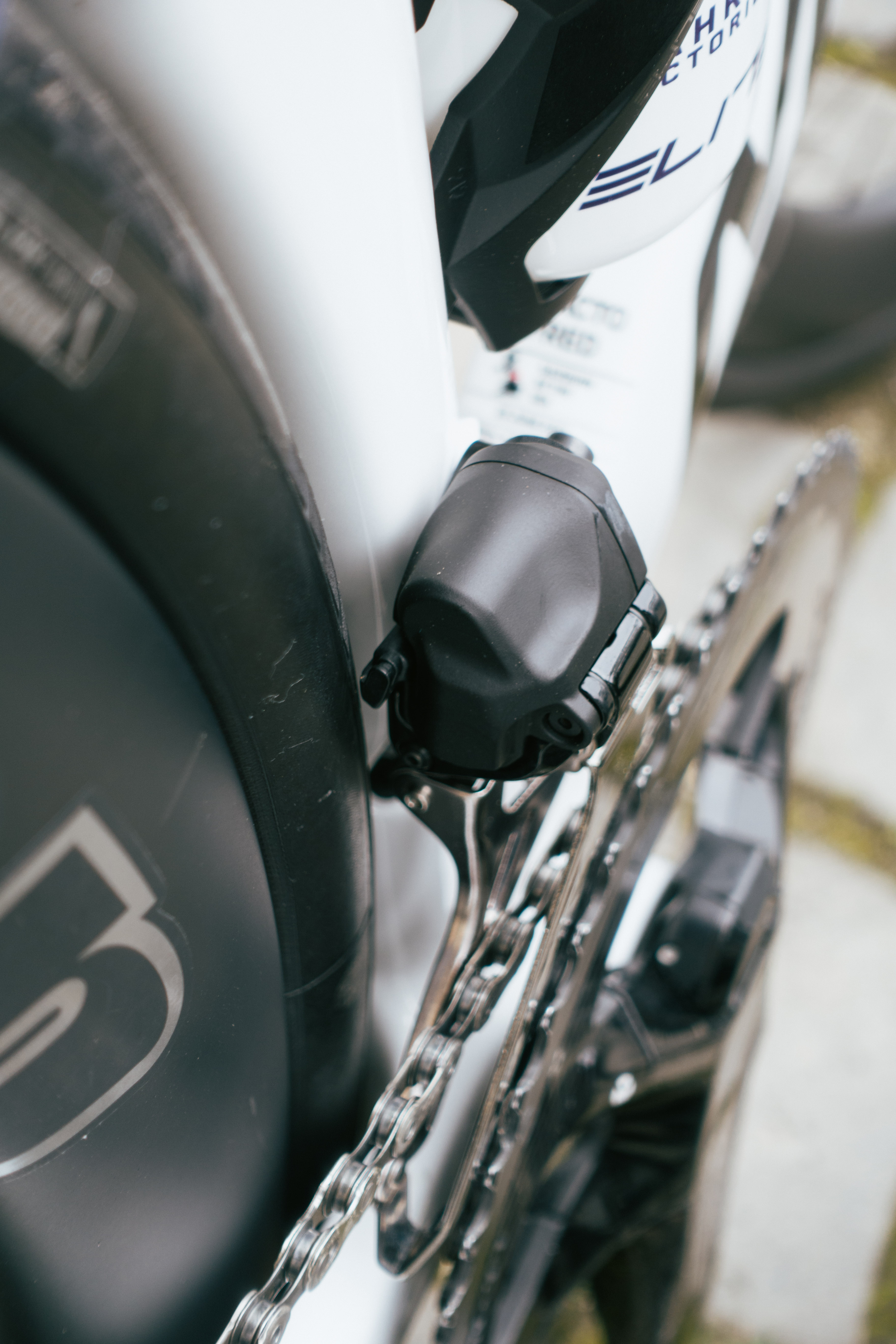
Body clearance is not the difficulty, entrance derailleur clearance is
One thing that we did not anticipate to study at this yr’s Paris-Roubaix is that though tyre clearance within the body is vital, it is not the limiting issue for Shimano-sponsored riders, their entrance derailleur was.
As Bahrain-Victorious lined up for the boys’s race, we noticed their Continental GP5000 AS TR tyres have been the 35mm vast possibility. Body clearance was tight, however not as tight because the millimetre hole between the rear tyre and the entrance derailleur. Given rims can simply deflect greater than this, it is fully potential that the 2 parts fouled one another at factors throughout the race, however there have been no catastrophes that we heard of.
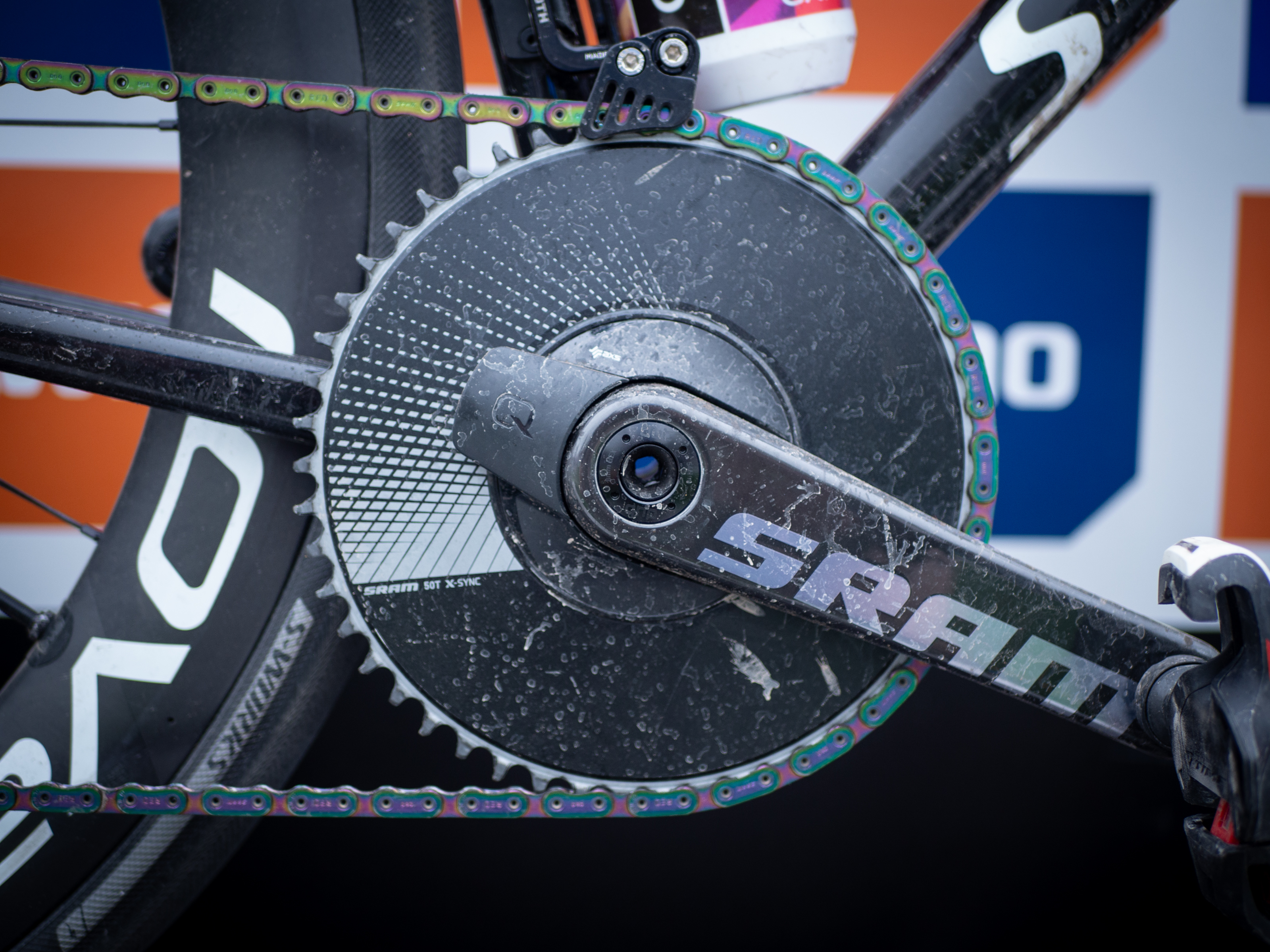
1x is right here to remain, and greater is healthier
Complementing our prior level, when you take away the entrance derailleur, you instantly achieve a bit of bit of additional clearance, and SRAM-sponsored riders know this. Dozens of them have been operating a single aero chainring.
For races like Paris-Roubaix which is generally flat, the interior chainring and entrance derailleur are simply lifeless weight and aerodynamic drag being carried round, so operating this set-up is a no brainer.
We all know Shimano can do it, as a result of Josh Tarling did so, however we have been stunned it wasn’t extra frequent. For individuals who did run 1x, larger gave the impression to be higher. Kopecky was maybe an outlier along with her 50T chainring, as most riders we noticed ran a 54T or larger.
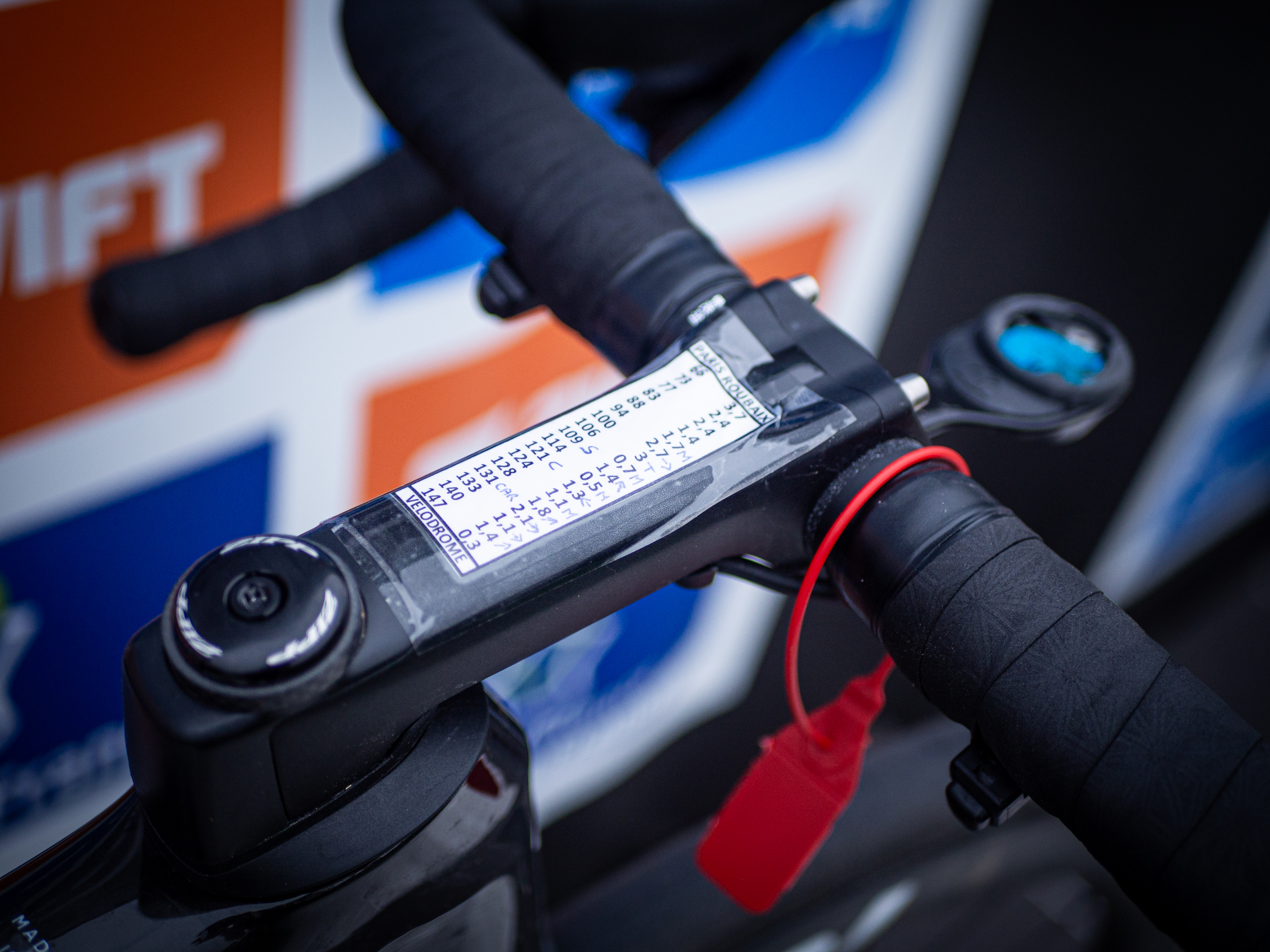
Riders dislike aero cockpits for the cobbles
Lotte Kopecky, in addition to the entire of the Soudal-QuickStep males’s group, ran a regular stem with a spherical handlebar slightly than the Roval Rapide one-piece cockpit. In doing so, they added no less than 4 (and doubtless extra) watts of aerodynamic drag, based mostly on Specialised’s personal claims.
They weren’t the one ones, both. Patrolling the paddocks, the combo of most popular setups was so random it was virtually resplendent of a motorcycle store discount bin.
The rationale for his or her selection was unconfirmed, however anticipated to be as a result of it is simpler to loosely maintain the smaller handlebar and let it bounce round in your arms a bit of as a type of additional bump-smoothing compliance, slightly than attempt to grip it tightly.
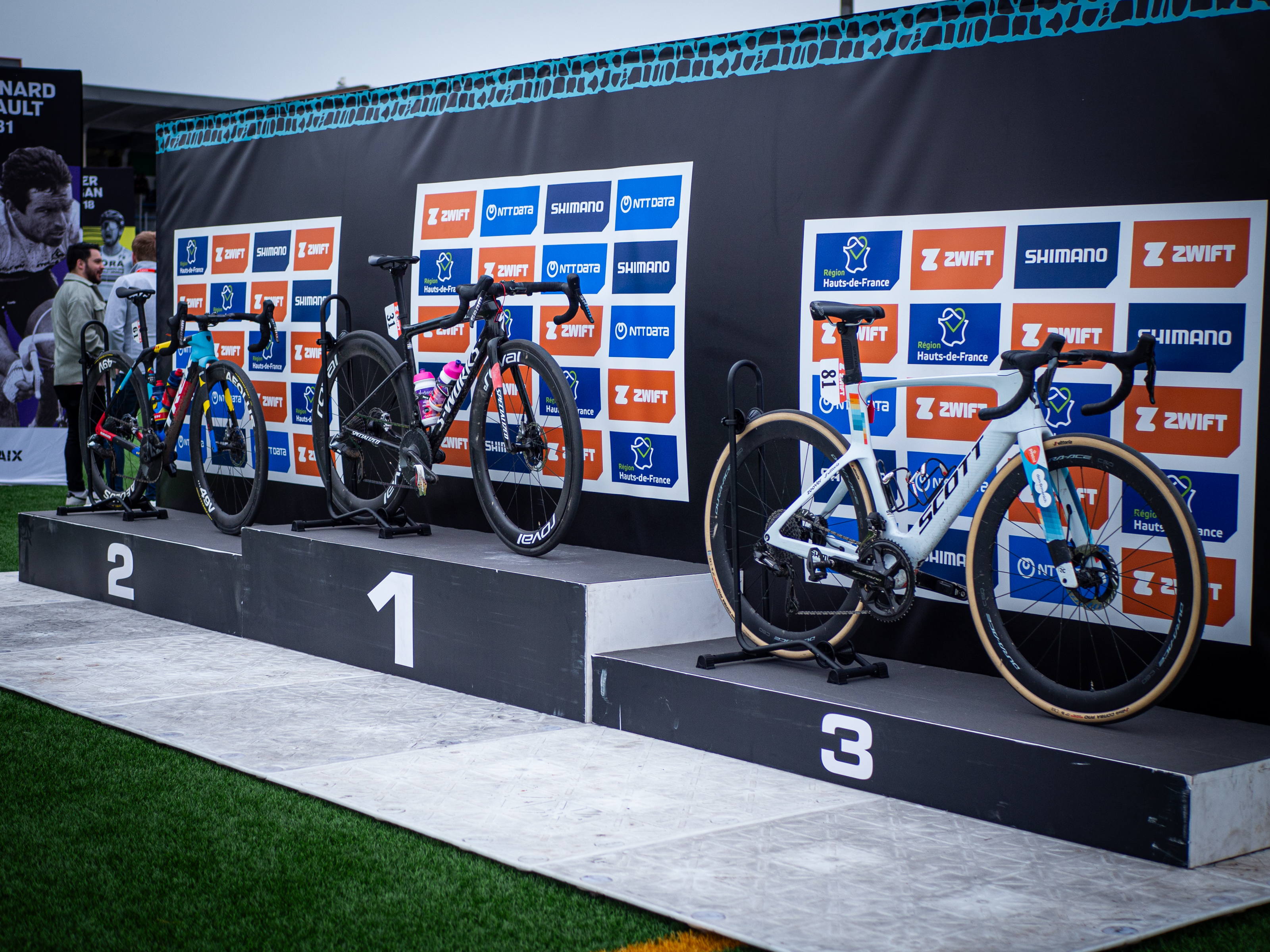
There is no good bike/tyre technique
One of many large takeaways from the 2024 Paris-Roubaix is that groups not often agree on the right gear setup.
Groups can solely work throughout the boundaries of their sponsors’ product providing, after all, even when they do often stray past these agreements, however even throughout groups that shared the identical suppliers, we noticed a big variance in chosen package.
On the bike entrance, the three totally different genres on the ladies’s podium is a testomony to that, with endurance bikes, aero bikes and all-rounders being evenly unfold throughout the broader peloton too. Within the males’s race, it was barely extra minimize and dry with the groups sometimes utilizing essentially the most aero possibility obtainable to them. That’s save for Israel Premier-Tech, who threw in a curve ball by racing the Issue Ostro Gravel bike.
Amongst Continental-sponsored groups, some went with measurement 32, whereas others went with 35mm. Some used inserts, whereas others did not. A few groups even remained on tubular tyres.
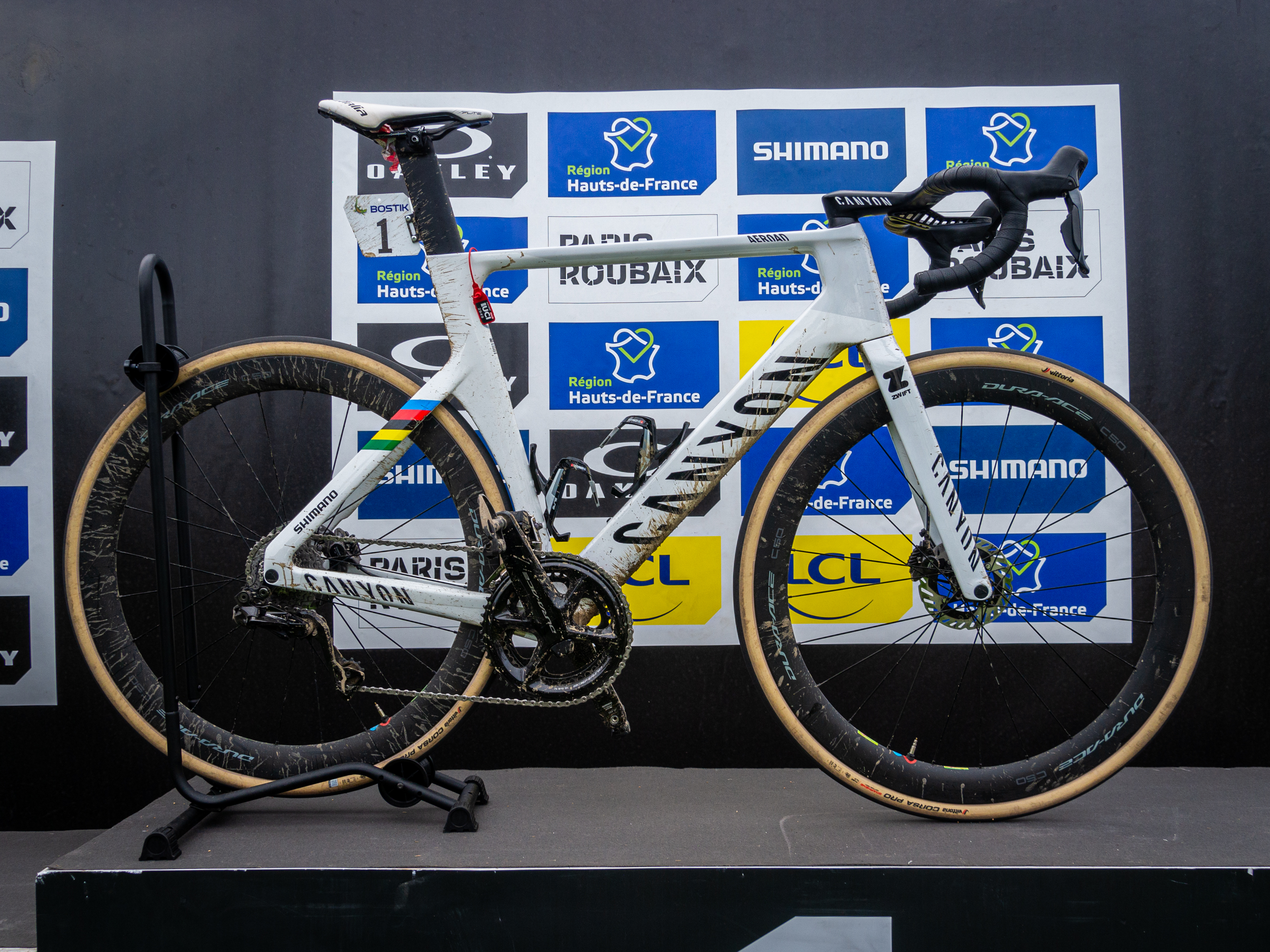
As we speak’s bikes are good… actually good
The boys’s version of Paris-Roubaix was the quickest in historical past. It beat the document set in 2023, which in flip beat the document set in 2022. Which means we have had three years of record-breaking pace in a row. That is helped by climate, after all, and it is also a testomony to the calibre of the present WorldTour peloton, however there is no denying that the potential of the bikes helps.
There mightn’t have been any groundbreaking cobble-smoothing hacks this yr, however race bikes as of late are good. Darn good.


